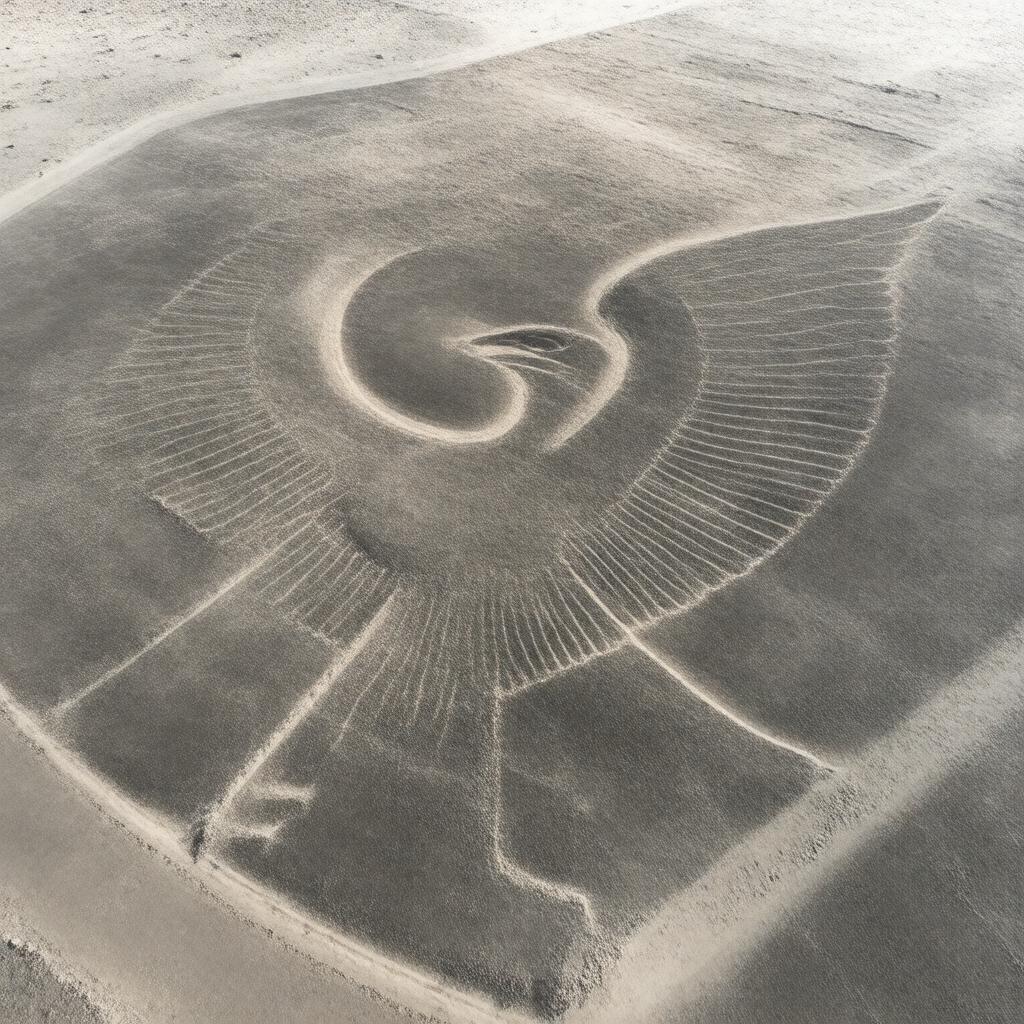Prompt
"Generate an image of a sprawling, mysterious archaeological site in the Nazca Desert, Peru, featuring hundreds of massive geoglyphs depicting animals, plants, and geometric shapes, with a large bird and condor designs prominently visible, under a vast, clear sky with a sense of aerial perspective, showcasing the intricate designs etched into the pebble-covered surface, with the sun casting a warm glow, in a realistic and detailed style."

